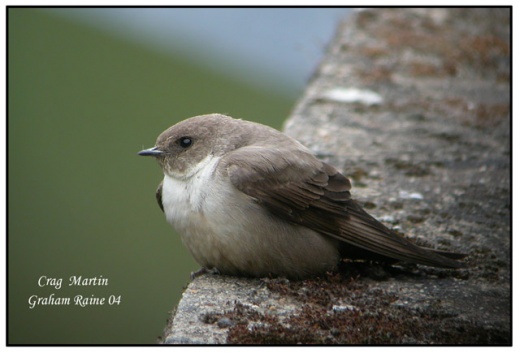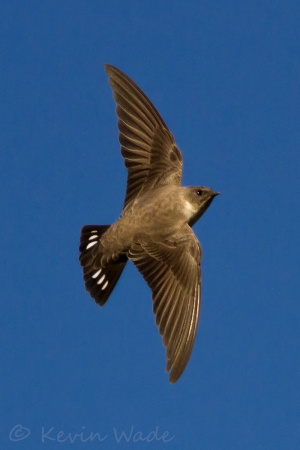- Ptyonoprogne rupestris
Hirundo rupestris
Identification
14-15cm (5½-6 in)
- Brownish-grey crown and upperparts
- Dark b0rown wings and tail
- Buff underparts (no breast band)
- Square tail has white spots
Distribution
Widely distributed from Europe to Asia, Arabia and India.
Taxonomy
Previously in genus Hirundo.
This is a monotypic species[1].
Habitat
Rocky outcrops, coastal cliffs and alpine villages.
Behaviour
Diet
Their diet consists of flying insects such as flies, stoneflies, cadis flies, beetles and moths.
Breeding
The nest is constructed from mud and placed under overhanging cliffs. The clutch contains 3-5 eggs. There is usually a second brood.
References
- Clements, J. F., T. S. Schulenberg, M. J. Iliff, D. Roberson, T. A. Fredericks, B. L. Sullivan, and C. L. Wood. 2018. The eBird/Clements checklist of birds of the world: v2018. Downloaded from http://www.birds.cornell.edu/clementschecklist/download/
- Collins Field Guide 5th Edition ISBN 0 00 219900 9
- Handbook of the Birds of the World Alive (retrieved May 2019)
Recommended Citation
- BirdForum Opus contributors. (2025) Eurasian Crag Martin. In: BirdForum, the forum for wild birds and birding. Retrieved 11 May 2025 from https://www.birdforum.net/opus/Eurasian_Crag_Martin
External Links
GSearch checked for 2020 platform.





